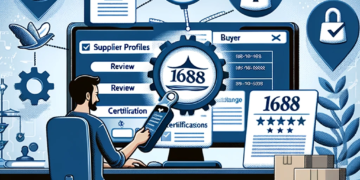Loans are a scary thing, whether you are taking out a personal loan to get a new car or a business loan for your dream start-up. It is a big commitment, and the larger the loan is, the more stressful it can be to handle. However, with the right planning and preparation, everything becomes much easier.
If you are not sure where to start, it is important to understand the basics before you dive into arranging a huge loan. This article will guide you through the steps to manage a large loan effectively, ensuring that nothing catches you off guard later down the line.
Understanding the Basics of Large Loans
Before diving into how to manage a large loan, it is crucial to understand the basics. A large loan (whether that is $10,000 USD, 100,000 SEK or any other currency) is a significant financial commitment, and it comes with responsibilities that need to be taken seriously.
There can be a lot to keep in mind when approaching loans, including the interest rate, repayment terms, and fees. The terms of your loan can be a huge factor in whether you can manage the loan effectively and whether or not you can get approved.
Interest Rates and Loan Terms
Interest rates are a crucial aspect of any loan. They determine how much you will end up paying in addition to the principal amount over the loan’s duration. The interest rate on a loan can vary significantly based on several factors, including your credit score, the loan term, and whether the loan is secured or unsecured.
Beyond this, some lenders will simply decide to offer higher or lower interest on average. This means that it can be really important to compare different options since a slight difference in interest can add up to a significant amount over the course of the loan.
Loan terms can range from a few months to several years. A longer loan term means lower monthly payments, but it also means you will pay more in interest over the life of the loan. On the other hand, a shorter term might have higher monthly payments but will save you money on interest.
Security and Collateral
When dealing with large loans, security or collateral can play a significant role. A secured loan requires you to put up an asset, such as your home or car, as collateral – something that the lender can take as compensation if you fail to pay back your loan.
This gives the lender a level of extra risk prevention, which might result in a lower interest rate. However, the downside is that if you default on the loan, the lender can seize your asset.
Unsecured loans, on the other hand, do not require collateral, but they often come with higher interest rates due to the increased risk for the lender. The decision between a secured and unsecured loan will depend on your financial situation and your comfort with the risks involved.
Managing a Large Loan
There can be a lot involved in managing a big loan, both before and after you actually apply for the loan itself. The more money you are dealing with, the more you have to be careful, especially since it usually means that you are dealing with much higher stakes.
While every loan is different, there are some specific things that always help when dealing with larger amounts of money. Having even a basic plan of action can make a huge difference in the long term.
Assessing Your Financial Situation
Before applying for a large loan, it is important to evaluate your financial situation. This involves looking closely at your income, expenses, existing debts, and overall financial health – basically, anything that might relate to the loan directly. Understanding your financial health will help you determine how much you can realistically borrow and repay without straining your finances.
More importantly, checking this information can speed up the loan application process anyway. Most lenders will want to know things like your current financial income, your outstanding debts and your credit score – so getting that information ready ahead of time can streamline the application process.
Shopping for the Best Loan
Not all loans are created equal, and it is crucial to shop around to find the best deal. Different lenders offer different interest rates, fees, and terms, so take the time to compare options and consider what you would actually be comfortable with.
This is a very important step, because many people gravitate towards the first decent-looking loans they find and never consider other choices. There can be hundreds of similar loan options out there to choose from, and finding the one that works best for you will make a big difference in the long run.
Creating a Budget
One of the most effective ways to manage a large loan is by creating a detailed budget. This budget should account for your loan repayments alongside your regular expenses, such as rent, utilities, groceries, and savings.
By mapping out your income and expenditures, you can keep track of how much you will actually be paying every month. This makes a massive difference if you are trying to be smarter with your spending.
Calculating Affordability
When considering a large loan, it is crucial to calculate your affordability. This means determining how much you can comfortably afford to borrow without overextending yourself financially, whether that includes loan payments and bills or just regular purchases.
A good rule of thumb is that your total monthly debt payments, including the new loan, should be at most 30-40 % of your monthly income. The more of your income you are spending on a loan, the less money you have to spare for emergencies.
Naturally, this is something you can’t always help, especially if you have limited loan options available. Even still, it is good to try to keep a close eye on how much of your money is already going towards expenses.
Understanding the Impact on Credit Score
Taking out a large loan will have an impact on your credit score, both positive and negative. Initially, applying for a loan might cause a small dip in your credit score due to the hard inquiry by the lender. However, if you manage the loan responsibly by making timely payments, your credit score can improve over time.
On the flip side, missing payments or defaulting on the loan can severely damage your credit score, making it harder to obtain credit in the future. It is essential to understand the long-term implications of a large loan on your credit and take steps to protect it.
Reading the Fine Print
Before signing any loan agreement, make sure you read and understand the fine print – the smaller details that make up most of the loan terms and other legal details. Pay attention to the interest rate, repayment schedule, fees, and any penalties for early repayment or late payments.
You never want to be caught off guard by hidden fees or conditions that were not previously mentioned, and the easiest way to find them is to take a look at the fine print. If you suspect that there might be some bad terms buried in there, you can always get help from a legal expert.
Planning for the Unexpected
Life is unpredictable, and it is essential to plan for the unexpected when taking out a large loan. You never want to be caught without a way to pay off a major debt unless you have literally no options left, so common sense and pre-planning matter.
This might include setting aside an emergency fund to cover your loan payments in case of job loss, illness, or other financial setbacks. Having a safety net will give you peace of mind and ensure that you are prepared for any curveballs life throws your way.
Refinancing Options
If you find that your loan is becoming difficult to manage, consider refinancing. Refinancing involves taking out a new loan with better terms to pay off your existing loan.
This can be an effective way to lower your monthly payments, reduce your interest rate, or extend your loan term. However, keep in mind that refinancing may come with fees and could extend the time it takes to pay off your loan.
Seeking Professional Advice
If you are unsure about any aspect of managing a large loan, do not hesitate to seek professional advice. Sometimes, you need expert support to get around a potential problem or to guide you towards the best way out of a difficult loan situation.
A financial advisor can help you assess your situation, create a budget, and explore your options. They can also provide guidance on how to improve your credit score, manage debt, and plan for the future.
Resources on websites like billigeforbrukslån.no/lån-100-000/ can be a fantastic place to turn, giving you a lot of details that apply to loans of all types. The more informed you are about how loans work, the easier it gets to avoid making obvious mistakes.
Whatever loan you end up choosing, make sure that you are fully aware of the consequences and that you have a solid plan for managing the loan responsibly. Being prepared will go a long way in avoiding problems and handling your loan successfully.
David Prior
David Prior is the editor of Today News, responsible for the overall editorial strategy. He is an NCTJ-qualified journalist with over 20 years’ experience, and is also editor of the award-winning hyperlocal news title Altrincham Today. His LinkedIn profile is here.













































































